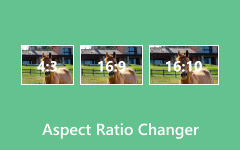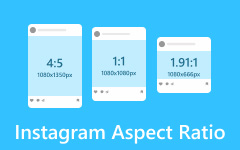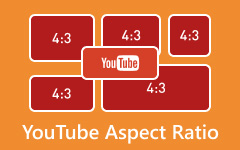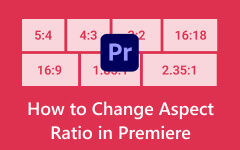What is a 4:3 aspect ratio? It is a classic display format usually associated with archaic video formats where the width is four and the height is three, now found in many old films, televisions, and computer monitors. Even though widescreen formats 16:9, for example, have gained dominance, the 4:3 aspect ratio is still relevant in some fields like retro gaming, security monitor displays, and artistic filmmaking. It is also ideal for historically authentic older content because enhancing vertical screen space and preserving authenticity in media formats is vital. In the following sections, we discuss the significance and uses of the 4:3 ratio, along with steps to create 4:3 videos.

Part 1. What Is 4:3 Aspect Ratio
Definition
The 4:3 ratio, which is also regarded as 1.33:1, is a ratio that defines the width and height of an image/screen where the width is four and the height is 3. So, four units in width will always have a corresponding three units in height. It was one of the most common ratios that were used in films, televisions, and computer monitors. I also still use and prefer this ratio.
History
The 4:3 ratio has been in use since the advent of motion pictures and television:
- Early Cinema (1890s-1950s): 4:3 is derived from early silent films, which then further evolved into the standard of Academy Ratio in the 1930's.
- Television (1940s-2000s): The 4:3 ratio became the global standard with the rise of television.
- Computer Monitors(1980s-2000s): The 4:3 ratio was used in early CRT monitors and LCD screens.
- Shift to Widescreen (2000s-Present): The 4:3 ratio is still relevant with specific applications, but over time, the 16:9 ratio has become the norm in digital media.
Part 2. Why Use 4:3 Aspect Ratio
Film and Television
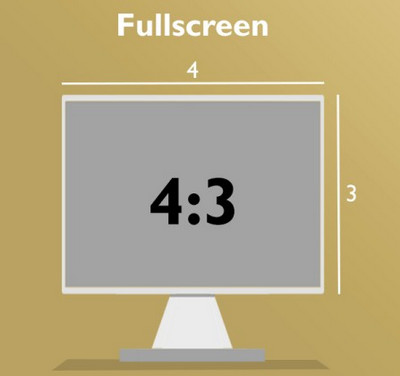
- Classic Movies: The majority of films made in the 20th century were filmed in a 4:3 ratio, so preserving vintage cinema is easily achievable.
- Artistic Choice: Some contemporary filmmakers use the 4:3 ratio to capture an intimate or nostalgic feeling, like in The Grand Budapest Hotel and The Lighthouse.
- Television Broadcasts: Older TV shows, especially pre-2000s, were all filmed in 4:3, and thus, the footage is valuable for archival purposes.
Computer Monitors
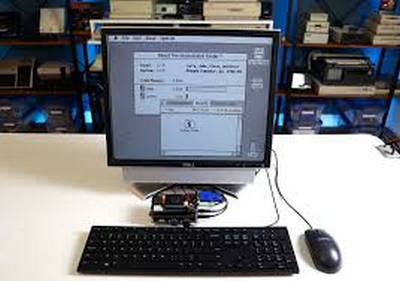
- Legacy Devices: Specialist industries like medicine still widely use older computers and workstations that utilize 4:3 screens.
- Better Vertical Space: For reading, document editing, and coding, 4:3 has more vertical room, which is beneficial.
Photography
- Classic print sizes: A number of traditional photo prints, i.e., 6 by 4 and 8 by 6, have a close aspect ratio.
- Balanced Framing: The square-like shape is suitable for portraits and some artistic photography.
Video Games
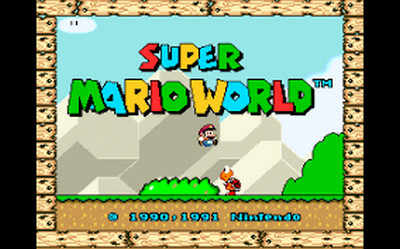
- Retro gaming: A number of classic video games from the 80s and 90s were created for 4:3 screens. Thus, accuracy in gameplay representation is vital.
- Arcade Machines: Authentic gaming experiences are provided when arcade cabinets equipped with 4:3 monitors are used.
Other Uses
- Presentation Slides: PowerPoint and other presentation software are usually used to support 4:3 style designs.
- Security Systems: A large quantity of CCTV cameras and monitors still work in a 4:3 aspect ratio.
- Aviation & Military Displays: Some cockpit displays, as well as some military-grade monitors, are still used for clearable viewing and visibility purposes.
Part 3. How to Create a Video in a 4:3 Ratio
If you want to produce a video in a 4:3 ratio, it is advisable to do so with the aid of professional editing software such as Tipard Video Converter Ultimate. The software has user-friendly functions that permit one to edit, convert, and export videos in different aspect ratios, including 4:3.
- Easily convert videos to 4:3 without distortion.
- Optimize videos for YouTube, Instagram, and Facebook.
- Add transitions, filters, and music.
- Edit multiple clips while keeping 4:3.
- Upscale resolution, adjust brightness, and reduce noise.

Detailed Steps to Create a 4:3 Video
Step 1Download and Install Tipard Video Converter Ultimate
Go to the official website and download the software. Proceed to install the program as per the prompts that appear.
Step 2Import Your Video
After launching the software, you click on Add Files and proceed to import your video. Alternatively, you can drag files into the program directly.
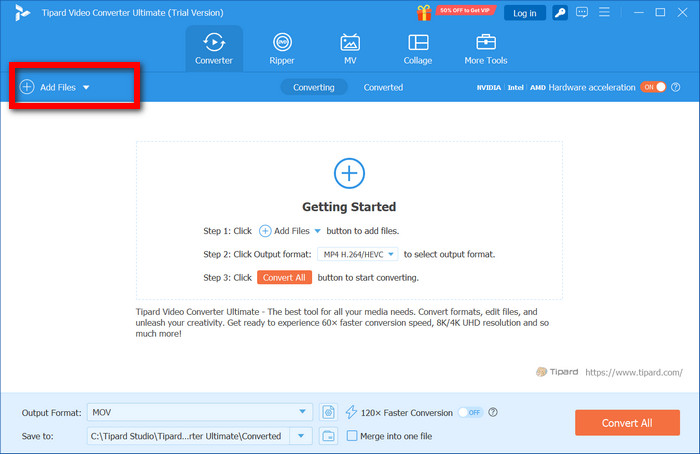
Step 3Change Your Aspect Ratio to 4:3
Next, hit the Edit button. Go to the Rotate & Crop section. In the Aspect Ratio, choose 4:3. While doing so, change the framing in order to fit your video content properly. Then, click OK to apply the modification.
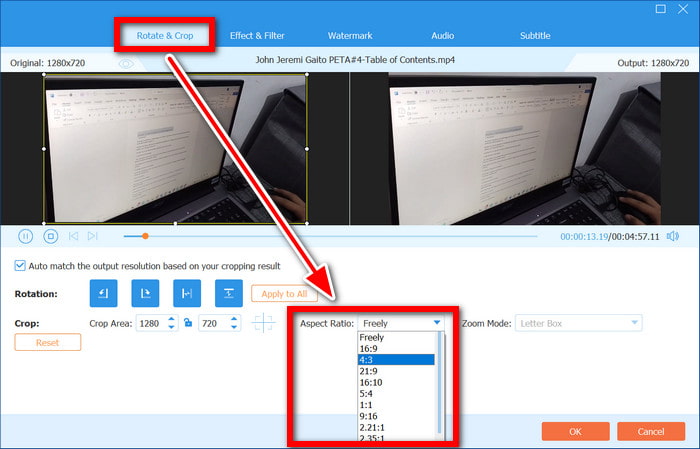
Step 4Apply Edits and Enhancements (Optional)
Eliminate sections using the Effect & Filter function. Watermarks, text, and filters can be incorporated to fine-tune visuals and leverage brightness, contrast, and saturation adjustments.
Step 5Export the Video
Finally, choose an Output Format (MP4, MOV, AVI, etc.), and then pick a desired encoding configuration along with a preferred resolution. Hit Convert All to do the magic and keep the video. You can also seamlessly upload it to social media platforms.
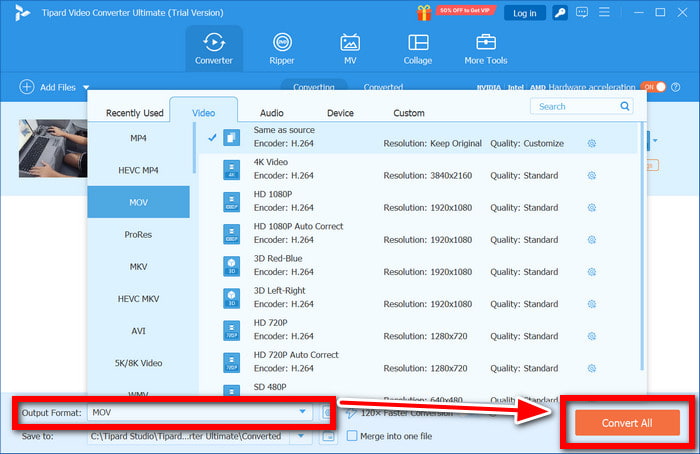
Part 4. Top 3 4:3 Aspect Ratio Calculators for You
1. Aspect Ratio Calculator by Calculator.net
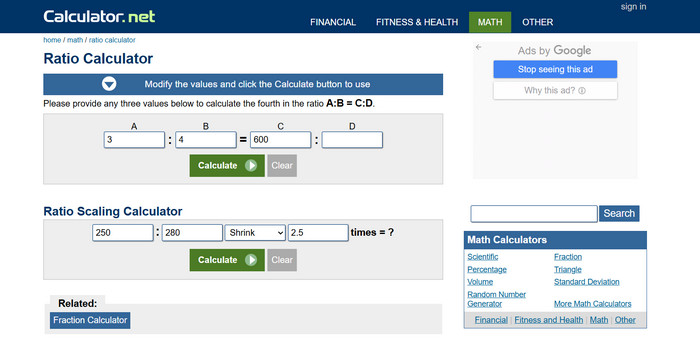
Calculator.net is an essential and easy-to-use tool for calculating the aspect ratios of a video or image.
- The user interface is clean and allows easy calculations to be performed within a matter of seconds.
- There is no need to download anything; the tool can be accessed using any browser.
- It can handle calculations for a number of different aspect ratios, allowing it to serve multiple needs at once.
- There are no custom features available, making the tool bare bones and essential for those who need to change aspect ratio quickly and efficiently.
- The tool lacks scaling options, which makes it unsuitable for professional editing style work.
2. Aspect Ratio Calculator (ARC) by Andrew Hedges
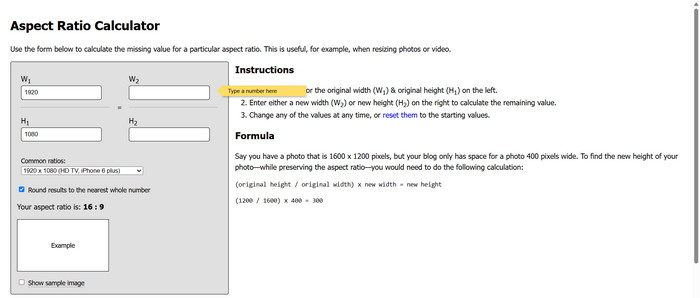
Aided by Andrew Hedges, this Aspect Ratio Calculator helps users determine the missing components of a given aspect ratio, which comes in handy when one needs to resize an image or a video.
- The tool is highly user-friendly because it follows a straightforward and clean design.
- Users are guided through the calculations and provided with helpful instructions and formulas. The tool is accessible to everyone as it does not require downloads or payment.
- Lacks comprehensive editing capabilities, leaving the user stuck with only calculative functions.
- It requires manual input for every calculation, as batch processing is not supported.
3. Red Route's Image Aspect Ratio and Resizing Calculator
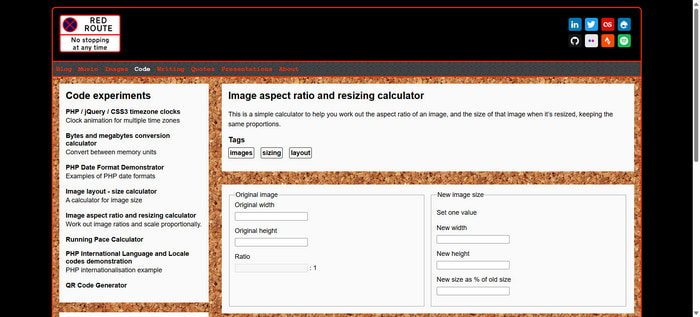
- The tool is uncomplicated, which means that users of all ages and skill levels can use it.
- It enables users to resize images while keeping the aspect ratio intact, with proportions maintained.
- The calculator can be used right away as it does not require downloading and can be opened directly through a web browser.
- The tool does not provide a lot of customizable options, as it only focuses on calculations of aspect ratios and resizing.
- No detailed editing options or bulk processing capabilities are present in this aspect ratio changer.
Conclusion
The 4:3 aspect ratio has remained essential for many eclectic applications like retro gaming, classic films, artistic projects, and even specific monitors. Although widescreen formats are rather dominant in today's time, having the 4:3 frame is a necessity for preserving historical content alongside improving vertical screen space. If you are editing videos or images or using old devices, then the 4:3 ratio serves the purpose of optimal presentation and convenience through different media bases.


